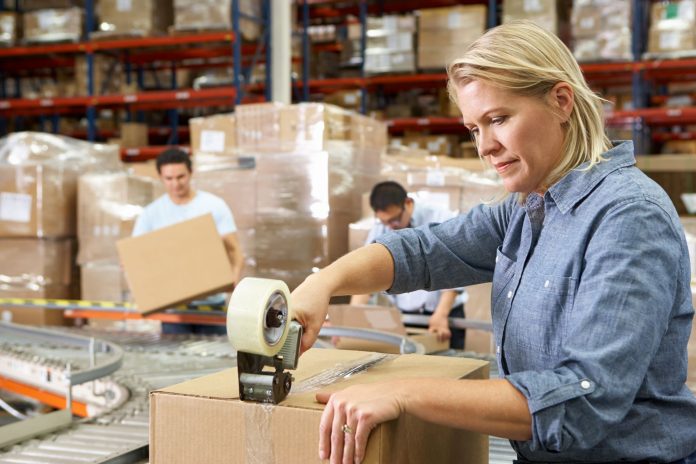Operational expenses are a significant component of a business’s overall costs. When poorly managed, these costs can significantly deplete a company’s financial resources and even lead to insolvency.
Among these expenses are fixed costs, such as rent, property taxes, and insurance premiums; inventory costs, including warehousing and obsolescence; and variable costs, such as raw materials, sales commissions, and packaging supplies.
Of the variable costs, packaging materials may appear to be a minor consideration but, without careful planning, can accumulate and become a substantial expense over time. These costs encompass the entire expenditure associated with packaging products and, therefore, offer an opportunity for significant savings.
For businesses seeking strategies to mitigate these costs, the following techniques offer valuable insights into saving money on packaging supplies.
- Work With Reliable Suppliers
The first step to saving money on packaging materials is working with reliable suppliers. They often offer competitive prices, as they’ve established long-lasting relationships with manufacturers and have access to promotional and bulk purchases. You can, therefore, work with them to secure your packaging materials at affordable charges, saving you money in the long run.
Another reason to work with reliable suppliers is that they’ll always provide quality materials. Quality materials are durable and can withstand wear and tear. Hence, you can use them several times before they lose their value. Also, quality packages ensure product safety during transit, saving you the money you’d otherwise spend to replace spoilt products.
Remember that the money you spend transporting the packaging materials from the supplier’s premises to your business location also adds to your packaging costs. Hence, it is best to find reliable suppliers that offer deals that include free transportation. This way, you can have your packaging supplies delivered to your doorstep without going through the hassle.
More importantly, reliable suppliers will likely face fewer supply chain risks, disruptions, and delays because they have enough materials in the warehouses. They also have alternative sourcing options that help prevent shortages. Working with such suppliers ensures you don’t purchase from alternative sources, leading to unnecessary additional costs.
- Consider Your Options
Many packaging options are available, and you’d want to research to find one that suits your business needs. You can’t always use boxes for every product; therefore, browse the latest trends, designs, and technology in packaging. Remember, using well-designed and trendy wrappings is a marketing strategy you can leverage to draw more customers.
However, while aesthetics is essential, avoiding going overboard is crucial. Extravagant paint and silk-screening use, particularly on plastic containers, can considerably escalate packaging costs. Therefore, striking a balance between attractive design and cost-effectiveness is a necessity.
Ensure that the aesthetic decisions align with the financial objectives to avoid inadvertently inflating the packaging budget. Before choosing one, consider the type, weight, and size of the products you wish to package. It is also essential to research government rules and regulations on the packaging.
Some of the packaging materials you can consider include the following:
- Cardboard or corrugated boxes
- Kraft paper or kraft bubble mailers
- Biodegradable peanuts
- Recycled poly mailers
- Paperboard or chipboard packaging
- Bulk cargo containers
- Bioplastics
Also, consider green or eco-friendly packaging. It’s good for the environment and reduces the overall cost of packaging materials. For one, green wrappings use recyclable and lightweight materials. This reduces the number of packaging materials needed, saving you money.
- Opt For Bulk Purchasing
Adopting a bulk purchasing strategy for packaging materials can be a simple and effective method to realize significant savings. Bulk buying often yields substantial discounts due to economies of scale while also reducing shipping charges by consolidating multiple orders into one. This, in turn, shortens the cumulative time required for material transportation, further minimizing costs.
Maintaining optimal stock levels is another critical advantage of bulk purchasing. An adequate inventory ensures the continuity of business operations, eliminating the need for emergency purchases, which often come at a premium. By avoiding such unplanned acquisitions, businesses can eschew purchases from alternative suppliers who may charge higher prices or provide inferior-quality materials.

However, it’s essential to apply discretion when purchasing in bulk. This strategy suits fast-moving items more, considering slower-moving items may end up as obsolete stock. Thus, businesses should carefully assess their usage rates across different materials before making bulk purchases, ensuring that the benefits outweigh the potential disadvantages.
- Leverage Technological Innovations
Several factors can contribute to escalating packaging costs, such as inefficient manufacturing processes, poorly structured packaging lines, and prolonged processing times. Fortunately, technological advancements provide a solution to these challenges, enabling businesses to streamline their packaging operations.
Manual packaging methods, while traditional, can be both inefficient and time-consuming. For instance, the time taken by an employee to assemble a corrugated box, insert products, and seal it manually can be significantly reduced through the use of automation technology. Automation not only improves speed and efficiency but also contributes to cost savings by minimizing the need for extensive labor.
Furthermore, the adoption of automation can lead to a reduction in packaging material damage that often results from improper handling. This reduces the need for replacement purchases, thus contributing to cost savings. By embracing technological solutions, businesses can substantially enhance their packaging efficiency and productivity.
- Invest In Team Training
Despite implementing new and efficient strategies, their success hinges on the cooperation and understanding of the team. Simply displaying instructions for careful material handling will not suffice. Proper training and education of team members are crucial to the effectiveness of any cost-saving initiative.
If the storage of packaging materials requires specific conditions, such as limiting pile heights, these procedures must be communicated clearly to the team. Explaining how material damage and the resultant operational disruptions can impact business expenses can help instill a sense of responsibility and care in handling packaging materials.
Additionally, training should extend to the optimal usage of new technologies such as automation. The benefits of technological advancements can only be fully realized when the team understands and can utilize these tools effectively.
Empowering the team with knowledge and skills can foster innovative ideas, drive cost-saving initiatives, and ultimately contribute to saving money on business packaging supplies.
Conclusion
Reducing the cost of business packaging supplies is a multifaceted process that demands strategic planning and intelligent execution. From selecting reliable suppliers to choosing cost-effective packaging materials, every decision contributes to the end goal of cost-saving.
Adopting a holistic approach towards cost reduction is crucial, which includes not just direct cost savings but also indirect advantages such as improved operational efficiency, waste reduction, and enhanced product safety.
Remember, it’s about achieving a balance between cost and quality, ensuring that while saving on costs, the packaging continues to serve its primary functions – protection and promotion of the product effectively.





